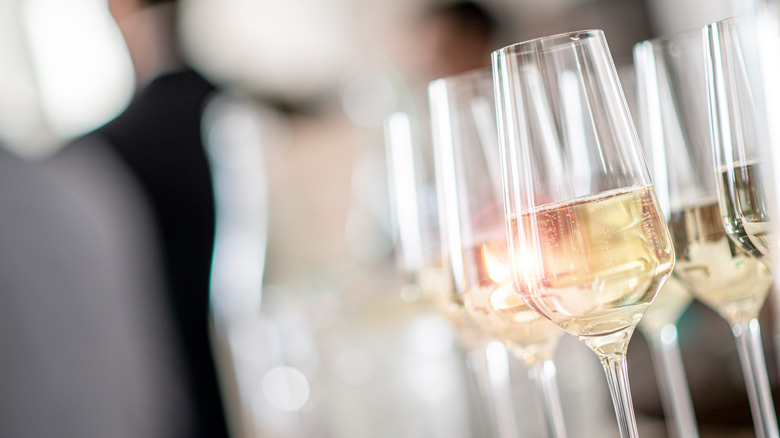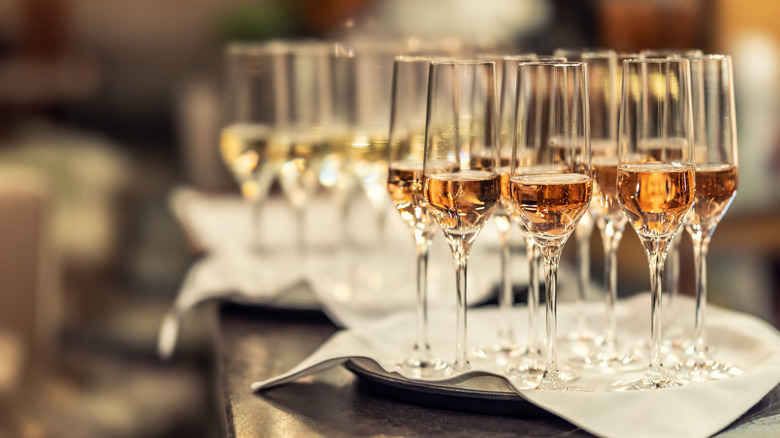The Simple Tip For Keeping Champagne Bubbling In A Glass
So much of the magic of champagne lives in its bubbles. They make that golden liquid dance, enhancing the wine's celebratory reputation. They also greatly contribute to the aromas, flavors, and mouthfeels of champagne: They release the wine's aromas as they reach the surface and explode into the air, and every remaining bubble in each sip you take creates that zingy bite. Flat champagne is, frankly, sad champagne, so how can you keep those bubbles alive for as long as possible once it's poured into a glass?
The trick is etched glassware. This goes for basically anything carbonated, too, from beer to every different type of champagne and, beyond that, to all the various sparkling wines. When the inside of a glass is perfectly smooth, carbonation bubbles stick to it instead of traveling through the liquid to the surface. Etching provides a texture that helps release them back from the glass's side into the champagne where they can do their aromatic bursting.
To understand this, it helps to know a bit about the carbonation itself. To make champagne, there's an initial fermentation of the grapes, followed by a second fermentation with sugar and yeast — creating carbonation as well as alcohol — and then a years-long resting period. The yeast, then dead, gets removed and the champagne is freshly corked, sometimes with more sugars, and the wine's new resting level of carbonation forms.
Other factors helping champagne stay bubbly
Different factors help champagne keep its bubbles for long periods of time. The pressure of a good cork can keep it sparkling in bottles for up to 70 years, and the wine's proteins keep bubbles stable. Once that champagne is poured, however, the loss of pressure in the open air and changing temperature can make bubbles dissipate.
To prolong carbonation as long as possible, look for glassware with etching inside — it's often near where the bowl meets the stem — or make your own. You can use a carbide-tipped pen to make some etchings yourself, and you only need a few. What glass you're choosing also plays a crucial role here. Champagne coupes are the least effective because their wider, flatter shape means more champagne is exposed to more air, and bubbles will leave the liquid quickly. Flutes are much better at concentrating carbonation, but they're a little controversial because their shape doesn't showcase aroma molecules the best. The ideal glass is a champagne tulip, with more of a V shape that rounds back in at top, because this concentrates and then shows off aromas as well as bubbles.
If you only have flutes, they'll do the trick — one of the most important elements beyond that etching is a stem. Warm temperatures also make carbonation fizzle out fast. The ideal temperature for champagne is 54 degrees Fahrenheit, and the warmth of your hand holding the glass directly will heat that up quickly.

